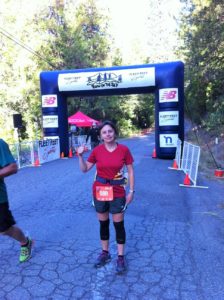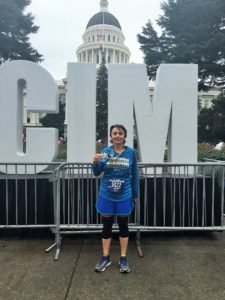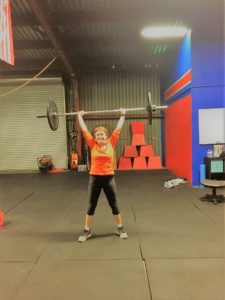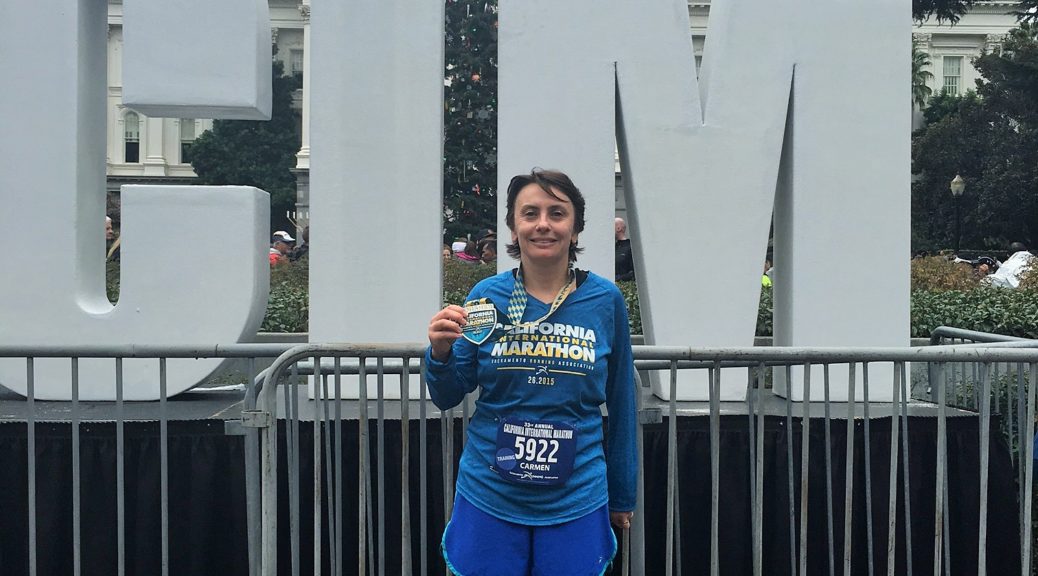Romanians (Yes, I am Romanian American and quite proud of it) have a great saying: “smart people learn from the mistakes of others, whereas not so smart people learn from their own mistakes.” I would love for you to learn from my mistakes and know that learning from your own mistakes is unavoidable. Besides, when things happen for the first time, it has little to do with your intelligence level: it has to do more with life’s constant element of surprise, or what I like to call an ocean wave sweeping us off our feet when we are least expecting it.
Balance
One of the things I think I am pretty good at is balancing my busy parent, professional, intellectual, and athletic life. I feel that I can juggle things, because I use my calendar well and try to write down all appointments, all my to-do lists, and still have room left for fun activities. I also found out that as a runner, balance is key. I need to balance my workouts, the time on my feet, as well as make room for tennis and strength training. But what happens when you become a little too confident in your running abilities? Well, you tip the balance scales to the heavier training cycle of running, so you start doing two runs a day even after a race you did the same day, which I have done and felt great at the time. You know that your form is good, so you won’t get injured, but overuse injuries can creep up upon us. Our bodies take the beating up to the point of quitting, so that’s when we start having problems.
Five worst running Injuries I have had in the last two years
I always thought I had a stronger body than my body really is! And, yes! I am an optimist who likes to wear the rosy glasses often. Moreover, just because I have played tennis for 22 years and never got injured is not enough to proclaim the Herculean strength of my body. As a matter of fact, once I started to run in 2015, I realized how many weak areas I had in my body, starting with the ankle which I injured in my first month of running due to poor form and improper shoes for my feet (I was wearing the low Altra shoes that offer no support to our ankles), but bounced back in 4 days. Then the knees pointed out to me that I had developed IT band syndrome, when I felt pain on the side of my knees and runner’s knee when my knees hurt right below the knee cap.


Although I always ran with my knee sleeves on for about a year, as if they had magical powers, I had discovered that I could run without them with no pain when I forgot to put them on. That day I ran freely without any “crutches,” so to speak and felt like Forrest Gump .
Next injury took me almost six months to clear, as I had developed Planter Fasciitis after buying running flats that had a lower heel drop than I was used to and due to my tight calf muscles. Every morning, the sharp pain in my heel felt like walking on needles or stepping on a nail, but once I started my run, I was pain free and kept on going.
Towards the end of 2016, I also developed a mild form of shin splints, with pain running up the inside of my lower legs. Shin Splints can happen to runners whose feet maintain ground contact too long, or if the foot lands too far in front of them. Higher mileage will also contribute to shin splints.
My fifth injury came on totally unexpected on March 21st, 2017 after I did some intense speed workout on the track. I did 4 mile repeats and felt great until I got home and started to limp badly. My husband asked me if I twisted my ankle, or my foot. I said “no.” My speed workout felt wonderful as always. I just didn’t know what happened, but I was sure I would be like brand new by the morning. And, yes: my rosy glasses were on. I had no clue that I had developed one of the worst injuries that only affects 0.6 percent of runners from what I have read – see how special I am?
I had developed peroneal tendonitis on my right foot, which is extreme pain on the outside area of the foot right above the ankle. Unlike all the above-noted injuries that never stopped me from training and running races, this one left me limping and unable to run. Yes, I was smart to stop running, while resting and icing, but it was mainly because my injury forced me to do that. I have not run in two weeks, doing aqua jogging, stretching exercises, and foam rolling.
After two weeks of rest and doing aqua jogging, Pilates class, and core exercises, I have tried acupuncture http://www.acupunctureinsacramento.com for the first time in my life to attack the tendon and be able to restart my Mountains to Beaches marathon training coming up on May 28th in Southern California. It worked so well and I highly recommend it, but check about your injuries with your doctor first.
http://www.healthline.com/health/fitness-exercise/peroneal-tendonitis-stretches#2
Although the article below talks about 5 most troublesome running injuries, which I had all, my sixth running injury comes and goes depending on how long and intense I run. I have had piriformis syndrome on and off, which is simply pain in the gluteal muscles, making it hard to maintain a certain pace, once it kicks in. I like to call this injury a kick in the butt, not figuratively speaking, as that’s the area that hurts and slows me down.
http://running.competitor.com/2014/07/injury-prevention/the-top-5-most-troublesome-running-injuries_11316/4
When it comes to healing all kinds of running related injuries, I recommend reading James Sullivan’s advice below and then read about my healing methods.
http://www.mensjournal.com/expert-advice/how-to-recover-from-running-injuries
CARMEN’S 20 HEALING METHODS FOR THE ABOVE-MENTIONED INJURIES AND ADVICE:
- Listen to my body and address the issue promptly.
- Read many running books and changed my running form after reading the Chi Running book by Danny and Katherine Dreyer. I highly recommend it, as I was able to apply the lessons and improve my form and speed.
- Read about the injury and take action to heal the body while running, if safe to run.
- Changed the type of shoes I wore and currently run in the Nike Lunar Glide 8, which are better for my feet.
- Changed my running shoes every 400 miles to avoid injuries.
- Rolling my foot on a tennis ball daily and often while working at my desk to get rid of Plantar Fasciitis.
- Using the foam roll often and doing different Yoga stretches.
- Doing weekly core and strength training exercises, such as squats, lunges, kettle bell swings, bridges, and so on.
- Doing hills to strengthen my body, especially my gluteal muscles.
- Running much slower on my recovery days to allow my body to fully recover.
- Running with friends to keep myself accountable.
- Using the sauna to loosen up the muscles and recover well from tough workouts.
- Using the Epsom salt baths after long runs.
- Not running the day before a race and especially before a marathon.
- Using the chiropractor once to realign my body.
- Using the acupuncture and common sense to heal the tendon.
- Not taking Levofloxacin or Ciprofloxacin antibiotics, as they can weaken the tendon and ankles, leaving one more prone to injury.
- Talking to other runner friends and asking for their advice.
- Staying humble.
- Being wiser about life and running – hopefully!
CARMEN’S 12 GOALS FOR RUNNING STRONGER AND INJURY-FREE IN THE FUTURE ALL THE WAY TO 100:
- Balance my tennis and running better, meaning that I won’t do a speed training session the same day that I play tennis. Instead, I will do an easy run the day I play tennis, or no run.
- Strengthen my muscles more.
- Do more stretches after my runs and ice more often at the first sign of soreness.
- Give up racing, if a small nagging injury is present and wait to be totally healed.
- Run mostly 5 days a week instead of 6, unless I am behind my schedule and my body feels healthy to handle the extra pounding.
- Do two easy runs a day when feeling good, but never a hard run followed by an easy one. After a hard run, or race, I can do aqua jogging to relax the body and muscles.
- Incorporate aqua jogging and biking into my weekly workouts for cross training and getting the body stronger.
- Listen to my body more and respond with rest when needed.
- Be flexible in rearranging my running schedule, if my body cannot accommodate a speed workout that day.
- Mix road and trail running, but avoid running too many hills on tired legs.
- Order custom orthotics for my high arched feet to take away the pressure from the calf muscles.
- Use acupuncture, deep tissue massages, and active release techniques to stay strong and healthy.

Although these injuries seem to be too much, I have enjoyed my running tremendously and highly recommend it to all my friends as the best mediation in motion out there. I have been successful at it, winning many age group races and even winning first female overall in the Gumby 5K trail run this year. I believe that with the right plan and improved running technique, I will continue to run many more races and marathons. Running is life!
For more info on running and real estate, whether buying or selling, please e-mail me at carmenmicsa@yahoo.com, or call me at 916-342-2446. Running for real estate with joy!


Great blog Carmen!
– Dave Lateano
Thanks, David! Sorry, I just saw your comment. Happy feet!